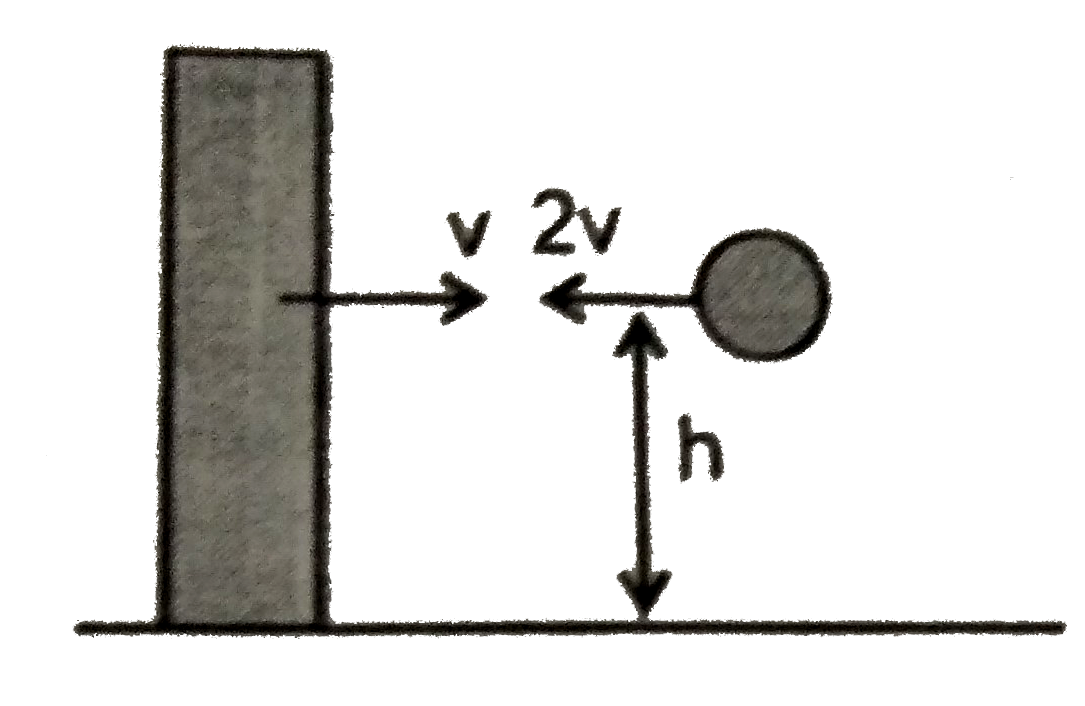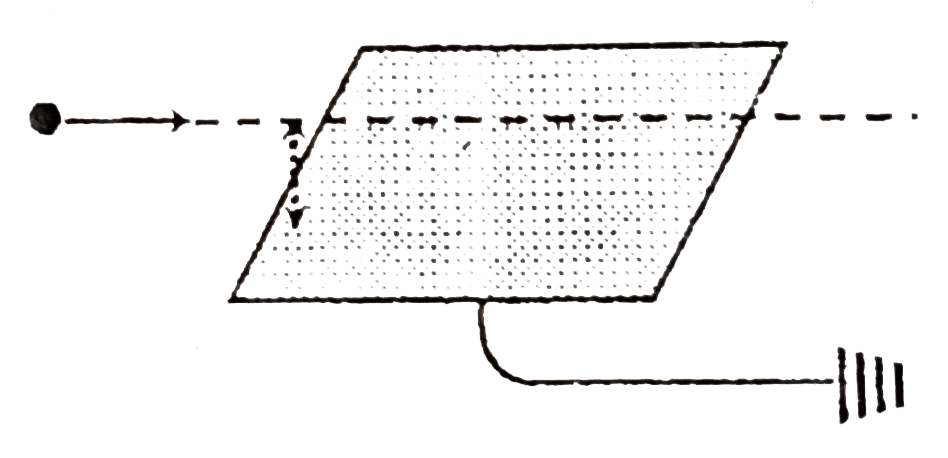Consider a thin square plate floating on a viscous liquid in a large tank. The height h of the liquid in the tank is much less than the width of the tank. The floating plate is pulled horizontally with a constant velocity u0. Which of the following statement is (are) true ?
The resistive force of liquid on the plate is inversely proportional to h
The resistive force of liquid on the plate is independent of the area of the plate
The tangential (shear) stress on the floor of the tank increases with u0
the tangential (shear) stress on the plate varies linearly with the viscosity η of the liquid
The correct Answer is:A, C, D
The viscous force, F=−ηAdudx=−ηAu0h∴F∝1h,F∝u0,F∝η
Similar Questions
A ball collides elastically with a massive wall moving towards it with a velocity of v as shown. The collision occurs at a height of h above ground level and the velocity of the ball just before collision is 2v in horizontal direction. The distance between the foot of the wall and the point on the ground where the ball lands, at the instant the ball lands, will be :

View SolutionA flat plate is moving normal to its plane through a gas under the action of a constant force F. The gas is kept at a very low pressure. The speed of the plate v is much less than the average speed u of the gas molecules. Which of the following options is/are true ?
View Solution
Knowledge Check
Consider a thin square plate floating on a viscolas liquid in a large tank. The heighth of the liquid in the tank is much less than the width of the tank. The floating plate is pulled horizontally with a constant velocity u0. Which of the following statements is (are) true?
AThe resistive force of liquid on the plate is inversely proportional to hBThe resistive force of liquid on the plate is independent of the area of the plateCThe tangential (shear) stress on the floor of the tank increases with u0DThe tangential (shear) stress on the plate varies linearly with the viscosity η of the liquidA flat plate is moving normal to its plane through a gas under the action of a constant force F. The gas is kept at a very low pressure. The speed of the plate v is much less than the average speed u of the gas molecules. Which of the following options is/are true?
AThe pressure difference between the leading and trailing faces of the plate is proportional to uvBAt a later time the external force F balances the resistive forceCThe resistive force experienced by the plate is proportional to vDThe plate will continue to move with constant non-zero acceleration, at all timesThe rotation rate of a mixing blade, in rotations per second, slows as a liquid is being added to the mixer. The blade rotates at 1,000 rotations per second when the mixer is empty. The rate at which the blade slows is four rotations per second less than three times the square of the height of the liquid. If h is the height of liquid in the mixer, which of the following represents R(h), the rate of rotation?
A4−9h2B1,000−(4−3h)C1,000−(9h−4)D1,000−(3h2−4)
A broad metal plane is connected to earth through a conducting wire as shown. An electron flies with constant velocity along a straight line above the plate at a distance much less than the linear dimensions of the plate. If the current I flowing from the earth to the plate is considered to be positive, then which of the following graph correctly depicts the variation of current I with time ?

View SolutionA thin plate AB of large area A is placed symmetrically in a small gap of height h filled with water of viscosity η0and the plate has a constant velocity v by applying a force F as shown in the figure. If the gap is filled with some other liquid of viscosity 0.75η0 at what minimum distance (in cm) from top wall should the plate be placed in the gap, so that the plate can again be pulled at the same constant velocity V. by applying the same force F? (Take h=20cm)

View SolutionA thin plate AB of large area A is placed symmetrically in a small gap of height h filled with water of viscosity η0and the plate has a constant velocity v by applying a force F as shown in the figure. If the gap is filled with some other liquid of viscosity 0.75η0 at what minimum distance (in cm) from top wall should the plate be placed in the gap, so that the plate can again be pulled at the same constant velocity V. by applying the same force F? (Take h=20cm)
View SolutionA thin horizontal movable plate P is separated from two fixed horizontal plates P1 and P2 by two highly viscous liquids of coefficient of viscosity η1 and η2 as shown, where η2=4η1. Area of contact of movable plate with each fluid is same. If the distance between two fixed plates is h, then the distance h1 of movable plate from upper fixed plate such that the movable plate can be moved with a constant velocity by applying a minimum constant horizontal force F on movable plate is (assume velocity gradient to be uniform in each liquid).

View SolutionA tank, filled partially with a liquid, is subjected to a uniform horizontal acceleration. Which of the following is true for the surface of liquid in the tank?
View Solution
